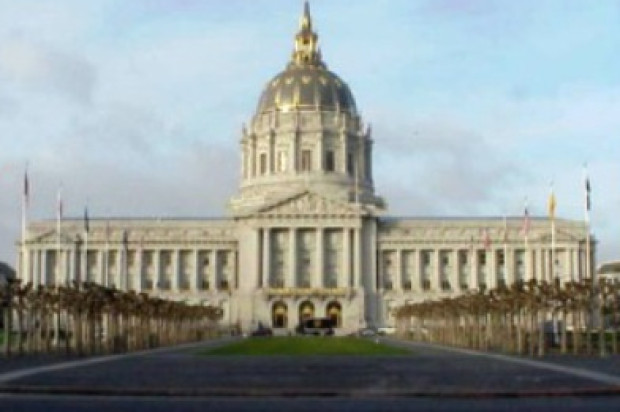
San Francisco Supervisor John Avalos is leading an effort to make one of the first ordinances in the country requiring public debate, oversight and accountability before law enforcement acquires surveillance technologies.
Avalos stood on the steps of San Francisco City Hall this afternoon and announced that he is working with the American Civil Liberties Union of Northern California and the City Attorney’s Office to draft a proposed ordinance to require public process prior to authorizing police or other city departments’ use of new surveillance technologies.
He said this proposed ordinance comes amid “an exponential increase in law enforcement use of surveillance technologies such as automated license plate readers, shot-spotters, drones, and body mounted cameras.”
Chris Conley, a technology and civil liberty policy attorney for the ACLU of Northern California, stood beside Avalos today in support of the proposed ordinance.
Conley said that the San Jose Police Department obtained a drone in August, but is only now beginning to meet with the public to discuss policies and procedures about how it will be used
He also noted that at least 11 northern California counties are already using a controversial cellphone surveillance technology known as a stingray.
Stingrays enable an individual or an agency to track a suspect’s cellphone location, but can also allow access to information on bystanders’ cellphones, according to the ACLU website.
Conley said that in addition to privacy issues, the ordinance addresses an increase in spending on surveillance technologies without public input.
The ACLU reports that more than $65 million has been spent on surveillance technology in California already, with the vast majority used by law enforcement agencies without public consideration of costs and benefits, or adequate policies to safeguard against misuse.
The proposed ordinance is designed to create a transparent and systematic approach to determine how and when surveillance technologies should be used in San Francisco, according to the ACLU.
Nicole A. Ozer, director of technology and civil liberties for the ACLU of Northern California said that since 9/11, law enforcement agencies across California have been using millions of federal dollars for surveillance technology, sidestepping normal oversight processes such as review by the Board of Supervisors, and have kept “the public in the dark about important community decisions.”
She said this ordinance would give San Franciscans a voice in the debate over surveillance technology use in their city.
The ACLU released a model ordinance that any community in the country can adopt to ensure a process of transparency and public engagement is followed every time there is a suggestion to obtain surveillance technology, she said.
The proposed ordinance request from Avalos comes in the wake of a recent hearing on a planned pilot program for the San Francisco Police Department to utilize body-mounted cameras.
While the concept of body-mounted cameras was supported by the Public Defender’s Office, the Office of Citizen Complaints, the ACLU and the police department, concern was expressed over how the cameras would be used, how the footage would be stored and made available and how much the technology would cost to not only be purchased, but used properly.
“Communities are increasingly concerned about making sure that time, energy and resources are not spent on expensive, ineffective and overly intrusive surveillance systems that create more problems than they solve,” Avalos said.
The San Francisco ordinance, if enacted, would help ensure that such a public process is followed every time a San Francisco department proposes using a new surveillance technology, Avalos said.
Hannah Albarazi, Bay City News









